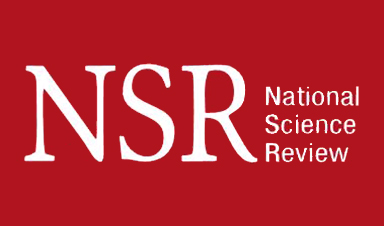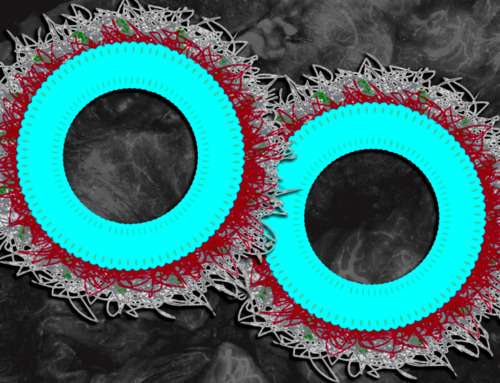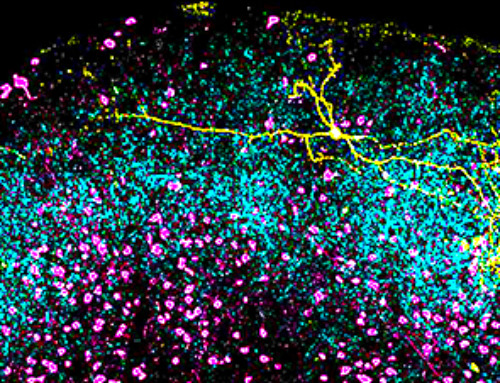Reactive oxygen species (ROS) exhibit the potential to act as signal carriers during the development of malignant tumors. At a suitable concentration, ROS tends to mediate cell growth and signal transduction.
But ROS are known to be a double-edged sword. On becoming surplus, ROS could oxidize proteins, cause damage to the DNA structure and cause cell apoptosis. Furthermore, ROS can induce inflammation at the tumor site, which additionally enhances tumor immunogenicity.
Thus, raising the content of ROS in tumor sites has turned out to be an efficient technique for cancer therapy. Currently, the methods to produce ROS via external stimulations, like radiation sensitization, sonodynamic reaction and photodynamic reaction, are heavily restricted by the laser’s penetration depth, irradiation range of external excitation and safety-related issues of the radiation.
As a result of such issues, chemodynamic therapy has advanced, garnering extensive attention. Chemodynamic therapy makes use of surplus H2O2 in the tumor microenvironment without the need for external energy stimulation to produce ROS via the Fenton reaction.
But the existing therapeutic effect of chemodynamic therapy is considered to be unsatisfactory. This is because the initiation of an efficient Fenton reaction needs surplus H2O2 and rough acidic conditions. Besides exogenous ROS production approaches, increasing the generation of endogenous ROS to curb tumor growth is another potential technique.
Hindering the mitochondrial electron transport chain could improve the generation of ROS. But treating cancer only through increasing endogenous ROS is unsatisfactory, as it is hard to efficiently impede tumor growth with a limited amount of generated endogenous ROS.
Thus, in the field of cancer therapy, it is hard to create approaches for the selective generation of sufficient ROS in the absence of external energy stimulation under mild in vivo conditions.
In the latest research article reported in the Beijing-based National Science Review, researchers from the Changchun Institute of Applied Chemistry of the Chinese Academy of Sciences, China, designed a cascade-responsive ROS generation device with a domino effect and in the absence of external stimulation for the particular generation of numerous severe ROS storms at the tumor site.
The co-authors of the study Yang Liu, Yinghui Wang, Shuyan Song, and Hongjie Zhang have discovered that the simple introduction of the synthesized ZnO2@Ce6/CaP@CPPO/BSA nanobomb into the tumor would induce a “domino effect.”
This in turn could activate the production of several ROS storms and Ca2+ overload, as well as efficiently activate the systemic immune response while hindering the growth of primary tumors. Furthermore, tumor metastasis can be efficiently avoided by adjuvant treatment with anti-CTLA4 checkpoint blockers.
This study received financial support from the National Natural Science Foundation of China, the Strategic Priority Research Program of the Chinese Academy of Sciences, and the Youth Innovation Promotion Association of the Chinese Academy of Sciences.
News
New nanoparticles stimulate the immune system to attack ovarian tumors
Cancer immunotherapy, which uses drugs that stimulate the body’s immune cells to attack tumors, is a promising approach to treating many types of cancer. However, it doesn’t work well for some tumors, including ovarian [...]
New Drug Kills Cancer 20,000x More Effectively With No Detectable Side Effects
By restructuring a common chemotherapy drug, scientists increased its potency by 20,000 times. In a significant step forward for cancer therapy, researchers at Northwestern University have redesigned the molecular structure of a well-known chemotherapy drug, greatly [...]
Lipid nanoparticles discovered that can deliver mRNA directly into heart muscle cells
Cardiovascular disease continues to be the leading cause of death worldwide. But advances in heart-failure therapeutics have stalled, largely due to the difficulty of delivering treatments at the cellular level. Now, a UC Berkeley-led [...]
The basic mechanisms of visual attention emerged over 500 million years ago, study suggests
The brain does not need its sophisticated cortex to interpret the visual world. A new study published in PLOS Biology demonstrates that a much older structure, the superior colliculus, contains the necessary circuitry to perform the [...]
AI Is Overheating. This New Technology Could Be the Fix
Engineers have developed a passive evaporative cooling membrane that dramatically improves heat removal for electronics and data centers Engineers at the University of California San Diego have created an innovative cooling system designed to greatly enhance [...]
New nanomedicine wipes out leukemia in animal study
In a promising advance for cancer treatment, Northwestern University scientists have re-engineered the molecular structure of a common chemotherapy drug, making it dramatically more soluble and effective and less toxic. In the new study, [...]
Mystery Solved: Scientists Find Cause for Unexplained, Deadly Diseases
A study reveals that a protein called RPA is essential for maintaining chromosome stability by stimulating telomerase. New findings from the University of Wisconsin-Madison suggest that problems with a key protein that helps preserve chromosome stability [...]
Nanotech Blocks Infection and Speed Up Chronic Wound Recovery
A new nanotech-based formulation using quercetin and omega-3 fatty acids shows promise in halting bacterial biofilms and boosting skin cell repair. Scientists have developed a nanotechnology-based treatment to fight bacterial biofilms in wound infections. The [...]
Researchers propose five key questions for effective adoption of AI in clinical practice
While Artificial Intelligence (AI) can be a powerful tool that physicians can use to help diagnose their patients and has great potential to improve accuracy, efficiency and patient safety, it has its drawbacks. It [...]
Advancements and clinical translation of intelligent nanodrugs for breast cancer treatment
A comprehensive review in "Biofunct. Mater." meticulously details the most recent advancements and clinical translation of intelligent nanodrugs for breast cancer treatment. This paper presents an exhaustive overview of subtype-specific nanostrategies, the clinical benefits [...]
It’s Not “All in Your Head”: Scientists Develop Revolutionary Blood Test for Chronic Fatigue Syndrome
A 96% accurate blood test for ME/CFS could transform diagnosis and pave the way for future long COVID detection. Researchers from the University of East Anglia and Oxford Biodynamics have created a highly accurate [...]
How Far Can the Body Go? Scientists Find the Ultimate Limit of Human Endurance
Even the most elite endurance athletes can’t outrun biology. A new study finds that humans hit a metabolic ceiling at about 2.5 times their resting energy burn. When ultra-runners take on races that last [...]
World’s Rivers “Overdosing” on Human Antibiotics, Study Finds
Researchers estimate that approximately 8,500 tons of antibiotics enter river systems each year after passing through the human body and wastewater treatment processes. Rivers spanning millions of kilometers across the globe are contaminated with [...]
Yale Scientists Solve a Century-Old Brain Wave Mystery
Yale scientists traced gamma brain waves to thalamus-cortex interactions. The discovery could reveal how brain rhythms shape perception and disease. For more than a century, scientists have observed rhythmic waves of synchronized neuronal activity [...]
Can introducing peanuts early prevent allergies? Real-world data confirms it helps
New evidence from a large U.S. primary care network shows that early peanut introduction, endorsed in 2015 and 2017 guidelines, was followed by a marked decline in clinician-diagnosed peanut and overall food allergies among [...]
Nanoparticle blueprints reveal path to smarter medicines
Lipid nanoparticles (LNPs) are the delivery vehicles of modern medicine, carrying cancer drugs, gene therapies and vaccines into cells. Until recently, many scientists assumed that all LNPs followed more or less the same blueprint, [...]





















